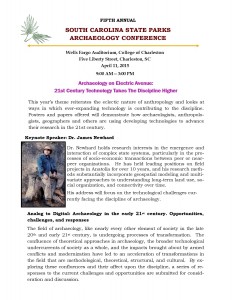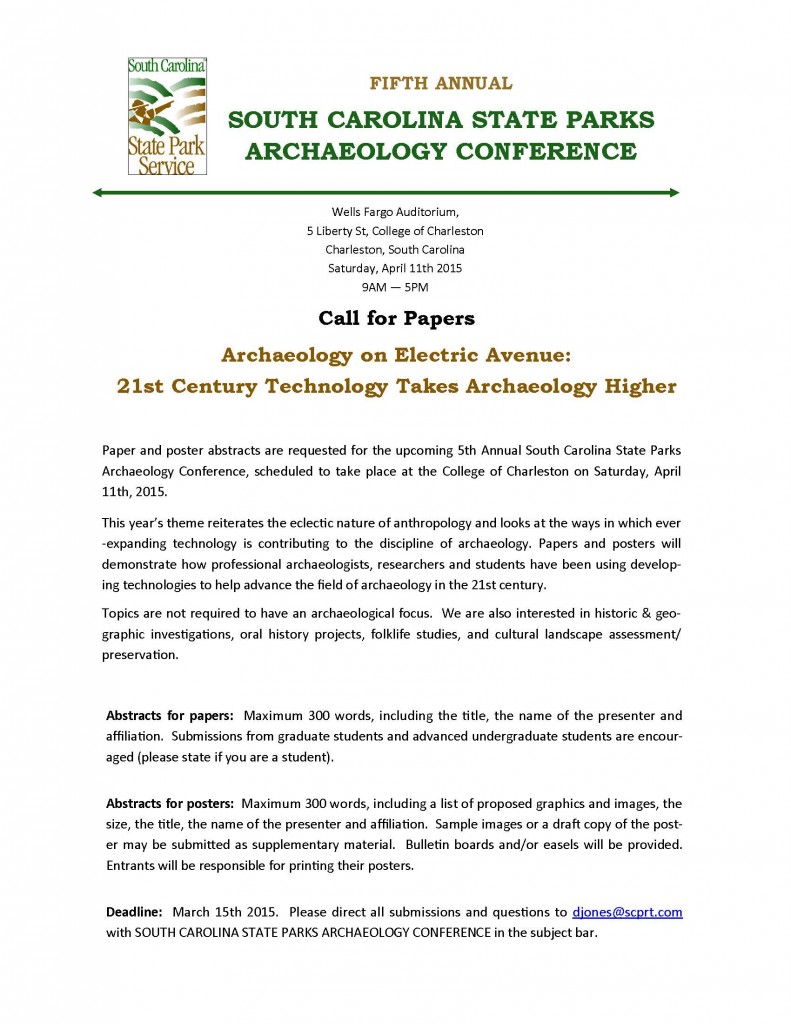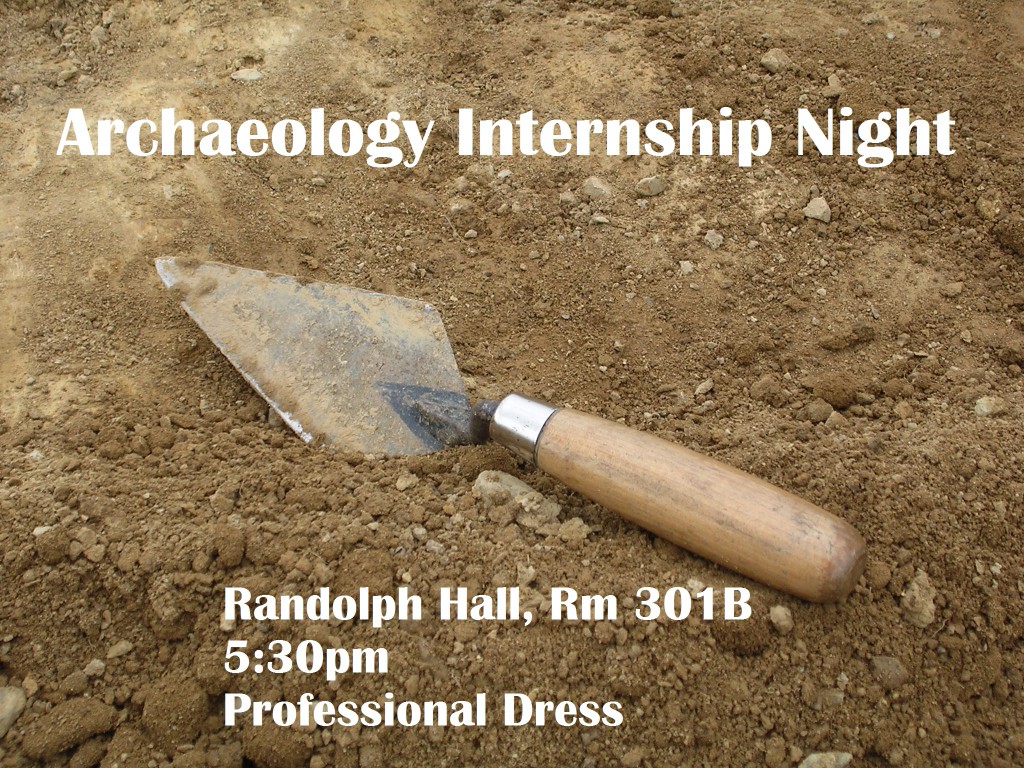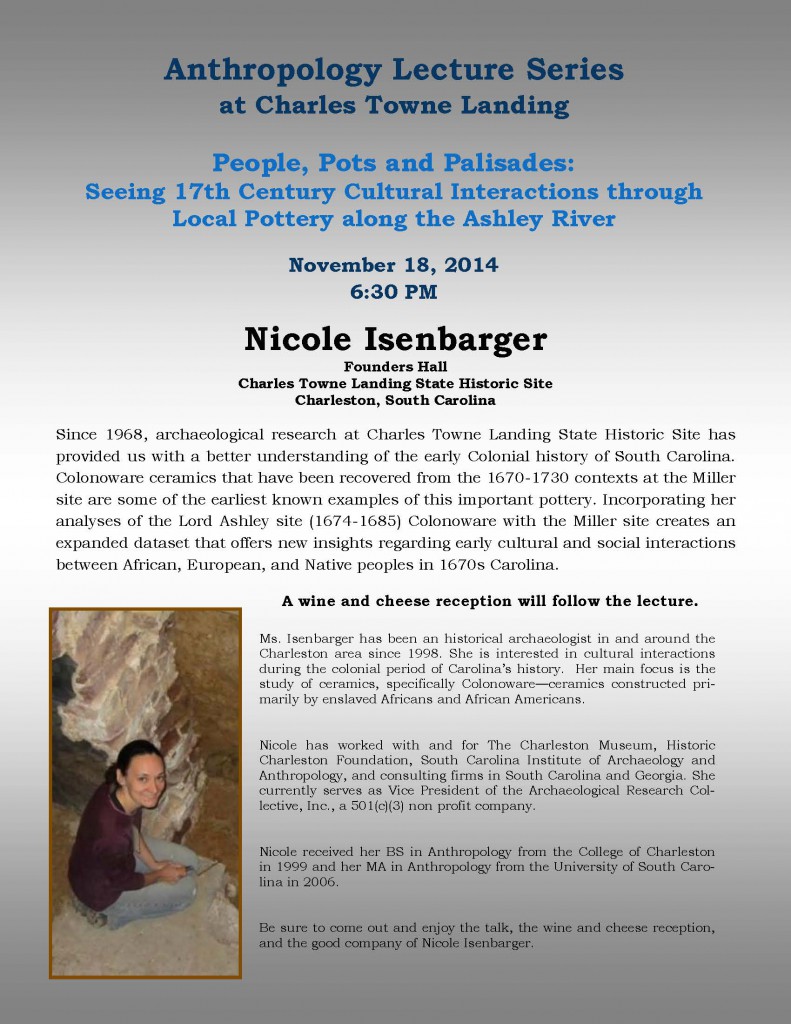Archives For November 30, 1999
This story is reproduced from its original posting on the Dept. of Sociology and Anthropology blog .
The first two weeks of the archaeology field school were spent working at the site of the Rose Plantation, which is a part of a 600 acre property called the Dill Property on James Island owned by the Charleston Museum. We were working in an area where old maps showed structures that were probably part of this plantation. We found remains of some structures and many artifacts that seem to suggest that we found some of it.
Weeks 3-6 were spent mostly at Hampton Plantation State Historic Site north of Charleston near McClellanville, SC. The field school has worked on this site before but not in this location which was in a large field south of the main plantation house. Our most productive excavation units were located at the southern end of this field, and a considerable distance from the plantation house. These excavations were overseen by David Jones, who coordinates the archaeological program for the State Park Service to include research archaeology and protection of archaeological resources. He was assisted by Stacy Young, who is an archaeologist contracted in the past to excavate part of the old slave residential area at this plantation.
During this period students also rotated through two sites in downtown Charleston to get a feel for urban archaeology, which produces a very different set of challenges. One site was at 86 Church Street, owned by the parents of archaeologist, Martha Middleton. It ended up being a 4 1/2 foot deep single excavation unit with a lot going on in it. The second site was the historic Manigault House, owned by and located across from the Charleston Museum. Excavations were done both in the basement and under the porch.
Historic artifacts were found in all these locations, but lab analysis will be required to determine what it all means. At Hampton Plantation not enough colonoware (pottery commonly made by African slaves, and possibly also Native Americans) was found to suggest that the structure(s) we think we uncovered were those of Africans. There was also no window glass that is usually found in European-style structures. The Seewee Indians were also residents in the area during the colonial period, and our Hampton site may have something to do with them. Lab analysis and, hopefully, more field school research there in two years will be necessary to sort this out.
Students read 21 professional articles on various phases of archaeology, learned to identify about 80 kinds of historic ceramics used for dating purposes, and did additional written work in addition to learning fieldwork skills.
For photos of the 2015 Archaeology Field School, please check out the CofC Sociology and Anthropology Facebook page.
 This year’s conference (April 11, 9:00 -3:00; Wells Fargo Auditorium, College of Charleston) will include papers highlighting recent research in the history, archaeology, and societies of the Lowcountry of South Carolina. Many studies reflect the overall theme of the conference, which takes a particular interest into the uses of technology in the study and presentation of the past. Participants include:
This year’s conference (April 11, 9:00 -3:00; Wells Fargo Auditorium, College of Charleston) will include papers highlighting recent research in the history, archaeology, and societies of the Lowcountry of South Carolina. Many studies reflect the overall theme of the conference, which takes a particular interest into the uses of technology in the study and presentation of the past. Participants include:
Olivia Adams: “Examining Cultural Landscapes of the Past: Charles Towne Landing”
Zak Bartholomew: ‘The Use of Geospatial Statistics for Defining Archaeological Sites Using Surface Survey Data”
Caitlin Bennett: “Dental Age Estimation in Subadults: A Re-Evaluation of Standards for Contemporary African American Children”
Carolyn Howle: “Reimagining the New Grange Passage Tomb through Folklore”
Jeremy C. Miller & Aaron Brummitt: “Observing Multi-Site Occupation through Innovative and Affordable Technologies: An Analysis of over 5,000 Years of Human Occupation at 38BK2091, Rebellion Farms”
Hannah Rawcliffe: “Anthropology and Technology: How Can Cultural Heritage Digitization Improve Dissemination of Information to the Public?”
Susan Bergeron: “Reconstructing the Rice Kingdom: Developing an Immersive Virtual Landscape for Historic Hampton Plantation”
Jesse Rouse: “From the Surface Down: Looking for Landscape Change at Hampton Plantation”
Craig Garrison: “Carriage Steps and Charleston’s Streetscape”
Welcoming Remarks by Tracey Burkett, Interim Chair of the Department of Sociology and Anthropology, College of Charleston
Keynote Address by James Newhard, Director of Archaeology, College of Charleston
The conference is sponsored by the SC State Park Service in partnership with the Department of Sociology and Anthropology and the Program in Archaeology at the College of Charleston.
The Archaeology Club will be having their first social event tonight at 5:30pm at King Street Cookies (379 King Street).
Come and join us for some good company and conversation with your fellow archaeology enthusiasts, as well as hear about some exciting events we have planned for this semester!
https://draytonhall.wordpress.com/2015/01/20/2015-drayton-hall-distinguished-speakers-series/

The Friends of Drayton Hall are pleased to present the second season of the Drayton Hall Distinguished Speakers Series. Beginning with the opening event of the 2015 season, you’ll experience a range of thought-provoking presentations related to America’s history and culture by some of today’s most respected historians, archaeologists, and curators. Speakers will also highlight the connections of Charleston and Drayton Hall to their research interests and answer questions from the audience.
The series is held in downtown Charleston at South Carolina Society Hall, 72 Meeting Street, Charleston SC 29401.
Ample on-street parking and public lot parking is available within a block of the South Carolina Society Hall.
Doors open at 5:30 pm with a wine and cheese reception sponsored by the Francis Marion Hotel. Presentations start promptly at 6:30 pm. No advance reservations; please arrive early as seating is limited.
For more information and sponsorship opportunities, please contact Tara White, Development Events Coordinator, at 843-769-2627 or by e-mail.
“Sacred Houses in Early Iron Age Greece?”
Event Details: Thursday, January 22. 7:00pm, Simons 309
Speaker: Alexander Ainian, University of Thessaly
Sponsored by: Archaeological Institute of America, Charleston Society
About Alexander Mazarakis Ainian
Alexander Mazarakis Ainian is Professor of Classical Archaeology with the University of Thessaly in Greece. He studied History of Art and Archaology at the Université Libre de Bruxelles”, Belgium (1980-1983, degree conferred with “Grande Distinction”) and continued his postgraduate studies at University College London with a grant from the Alexander Onassis Benefit Foundation, obtaining his Ph.D. in 1987, under the supervision of Professor J.N. Coldstream. Since 2009 he has been the President of the Scientific Committee of the University of Thessaly Publications and a Member of the Board for the Management of the Assets of the University. He has been the Scientific Director of several major European Union Research Programs as well as personal research programs and several other scientific projects. He has directed the excavations at Skala Oropou in northern Attica (and Early Iron Age metalworking site), at the ancient capital of Kythnos (Archaic-Hellenistic sanctuary), at Soros in Thessaly (Late Archaic-Classical sanctuary of Apollo at ancient Amphanai or Pagasai). Professor Ainian’s areas of specialization are the archaeology and architecture of Early Iron Age and Archaic Greece, and Homeric Archaeology, as well as ancient Greek religion and sanctuaries of the Geometric through the Classical periods. In recent years he has also specialized in underwater archaeology. Professor Ainian is a 2014/2015 Kress Lecturer for the AIA.
“Charleston’s First Battery Sea Wall, 1768 – 1769”
Event Details: Tuesday, January 27. 6:00pm, Charleston Public Library Auditorium
Speaker: Nic Butler
Sponsored by: Charleston County Public Library
About the Lecture
A few years before the outbreak of the American Revolution, the S.C. legislature funded a large-scale project to erect a half-mile long brick wall around the fortifications at White Point. Designed to keep out the waters of the Ashley and Cooper rivers, this massive work set the stage for the current stone “battery” seawall that was built in the early 1800s. Although it was superseded, the first wall may not be gone. Join CCPL’s historian, Dr. Nic Butler, for an illustrated review of the wall’s history and the clues to its present location.










